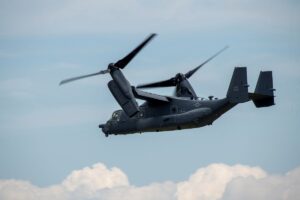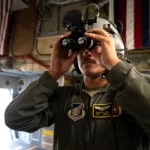
NATIONAL HARBOR, Md.--The U.S. Air Force Special Operations Command's (AFSOC) fleet of 51 Bell [TXT]-Boeing [BA] CV-22 tiltrotors may be flying without restrictions by the end of this year or early next year, AFSOC Commander Lt. Gen. Michael Conley told reporters on Wednesday. "About 60 percent of our fleet is fully operational," he said. "We're adding back three or so every 10 days." The figures would mark a return to flight acceleration, as AFSOC said that it had cleared 14…














